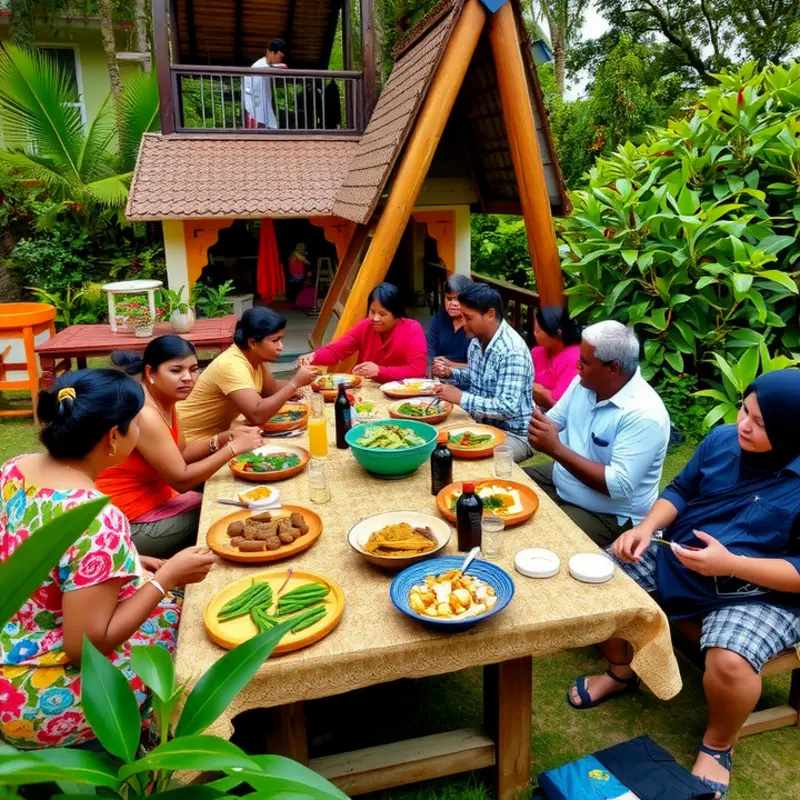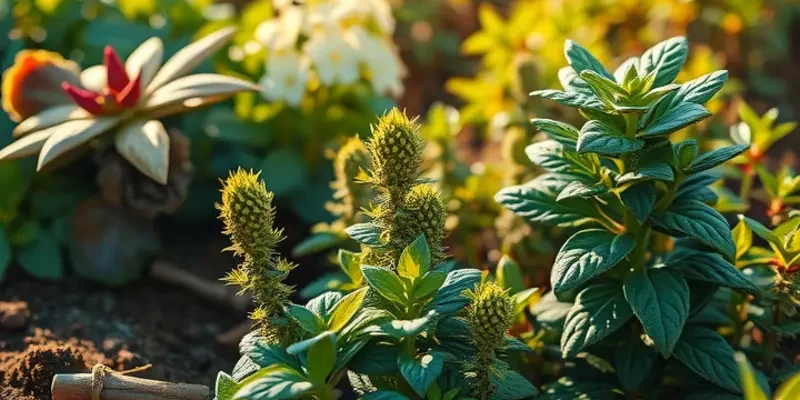Food is not just sustenance; it tells a story. Each bite we take connects us to myriad cultures, traditions, and histories. From the vibrant street markets of Bangkok to the cozy bistros of Paris, every locale offers a unique lens through which to appreciate the world’s culinary diversity. This article embarks on a flavorful journey through various food cultures, inviting food enthusiasts and the culturally curious to savor the richness of global cuisine.
Spices of the World: The Heart of Flavor

In any culinary exploration, spices shape and define the regional cuisines they inhabit. Their transformative power is evident in how they weave into the fabric of local traditions, offering both flavor and cultural richness. Across the globe, spices not only enhance taste but also narrate stories of history and heritage.
India’s spice palette is vast, vivid, and vibrant. At its core is turmeric, a golden spice that colors and flavors curries while holding great cultural and health significance. Used for thousands of years, turmeric is prominent in many Ayurvedic practices due to its antioxidant and anti-inflammatory properties. Beyond curries, it is central in rituals, marking auspicious beginnings and healing practices, symbolizing purity and prosperity.
Traveling west, the Spanish paella owes much of its character to smoky, rich paprika. This spice moved along trade routes centuries ago and shaped European recipes. Paprika, with its range from sweet to spicy, is harvested from peppers that are slowly dried to develop depth. More than just an ingredient, it is a staple in marketplaces, with families crafting their proprietary blends, a testament to generations’ worth of culinary evolution.
Crossing to the African continent, North African cuisines flaunt the robust heat and fragrance of cumin and coriander. Integral to spice blends like Ras el Hanout, these spices highlight the region’s complex flavors. Historically, they were wielded to signify luxury and wealth in ancient trading posts. Cumin seeds are often roasted, unlocking their earthy scents, essential in stews and tagines, inviting diners to partake in a sensory journey.
In the vibrant markets of Mexico, you’ll find cinnamon, or canela, in both sweet and savory dishes. However, Mexican cinnamon differs from its Asian cousins; it’s soft, almost buttery, with hints of citrus. It’s a mainstay in celebratory feasts and rituals, from elaborate mole sauces to aromatic desserts. Cinnamon’s warm embrace is said to nurture the soul, connecting generations through shared family recipes.
As these ingredients travel from fields to plates, they carry with them stories of their regions. It’s fascinating to see how harvesting methods reflect a culture’s respect for the environment and the spice itself. Whether sun-drying cardamom pods in the Western Ghats or hand-picking saffron stigmas in Iran, these processes are as ceremonial as they are practical.
Spices personify not only flavor but are health-packed additions to our diets. Many, such as ginger and cayenne, stimulate digestion and circulation. Integrating them into modern cooking offers an opportunity to harness their healing benefits while adding depth to dishes. For those seeking to explore cuisine without relying on salt, spices provide a vibrant alternative, boosting flavors naturally. More on this can be explored in this guide on flavor boosters without salt.
Every pinch of spice is a bridge to its origin, capturing the essence of its homeland. They invite us to engage with their stories, connecting diners worldwide through shared tastes and remnants of the past.
Culinary Traditions: Meals that Unite Communities

Food is a universal language that brings people together, transcending geographical and cultural boundaries. Shared meals serve as a cornerstone for many cultures, fostering a sense of community and belonging. These communal dining experiences often embody rituals that celebrate connections, heritage, and identity.
Consider the Italian tradition of Sunday family dinners. This weekly event brings families together, offering a time to unwind and reconnect over a meal crafted with love and tradition. The importance of sharing stories and cooking techniques across generations adds layers of richness to these gatherings. Dishes are crafted with local ingredients, each offering a taste of Italy’s diverse landscapes—from the sun-kissed tomatoes of the south to the rich cheeses of the north.
In Japan, the tea ceremony exemplifies hospitality and mindfulness. This ancient ritual emphasizes harmony, respect, purity, and tranquility. Participants are invited to savor each moment, reflecting on the aesthetics of tea preparation and presentation. Every action, from whisking the tea to the conversational etiquette, maintains a sense of reverence and mutual respect, embodying Japan’s cultural emphasis on community and mindfulness.
Traditional cooking methods play a critical role in these shared experiences. Tandoor ovens in Indian communities and barbecue pits in the southern United States highlight how these methods serve as a link to the past, preserving flavors that define regional specialties. For example, cooking under the earth in a hangi, a method used by the Māori of New Zealand, is not just about preparing food but reconnecting with ancestral ties and the land itself.
Food festivals around the world further illustrate the power of communal dining. These festivals, such as Thailand’s Songkran, bring together locals and visitors alike through shared meals and cultural exchange. Attendees can savor regional specialties that celebrate natural resources unique to the area. The abundance of flavors at these events showcases the ingenuity of local chefs and their ability to elevate humble ingredients into culinary masterpieces.
With the growing focus on sustainable and eco-friendly dining, regional cuisines have increasingly become a source of inspiration. Embodying practices that emphasize local sourcing, traditional meals often promote sustainable agriculture and reduced waste. This aligns with the notion of celebrating local harvests and minimizing the carbon footprint. Eco-smart kitchen practices illustrated by various communities worldwide offer a glimpse into harmonious living.
By understanding the significance of meals in various cultures, we gain insight into the heart of these communities. These traditions reveal stories of resilience, creativity, and sheer joy in the act of coming together. Such meals embody more than just sustenance; they encapsulate the spirit and stories that have been passed down through generations, tying each person to their heritage and their neighbors.
Final words
As we journey through global food cultures, it’s clear that every dish served reflects a tapestry of tradition, history, and communal spirit. The spices that season our meals, the traditions that accompany them, and the stories shared around the table have a profound impact on how we connect with one another. In every culture, food is more than nutrition; it embodies love, community, and shared history. By exploring these diverse culinary landscapes, we deepen our appreciation for not only the flavors of the world but also the people and stories behind them. So, the next time you savor a dish from a different culture, remember, it’s not just food, it’s a connection to the world.








